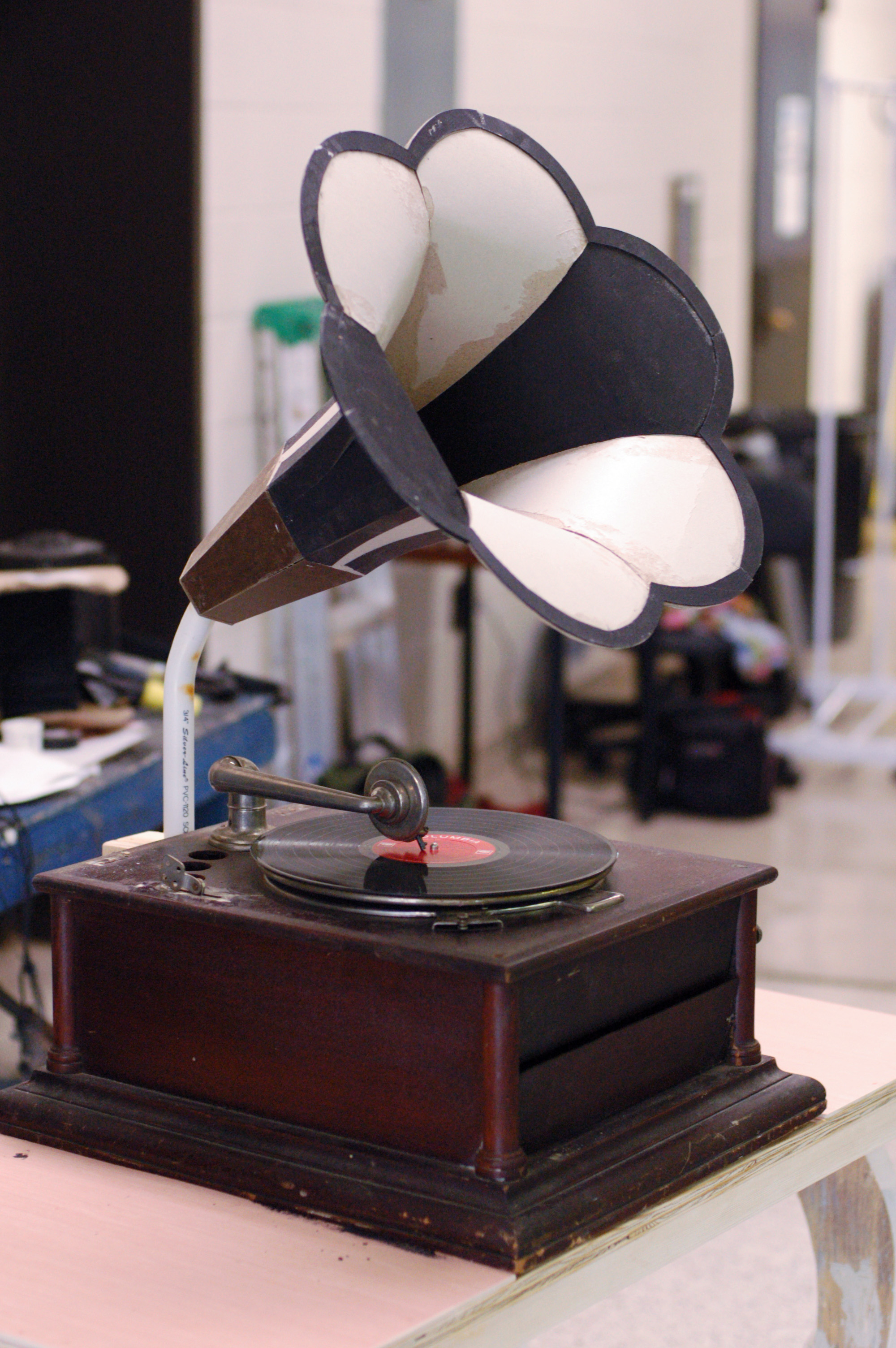I did the props for Elon University’s Wild Party back in February, but I haven’t gotten around to posting pictures of a quick gramophone horn I made. The budget was tight and nothing was available to borrow or rent, so I decided to construct my own.
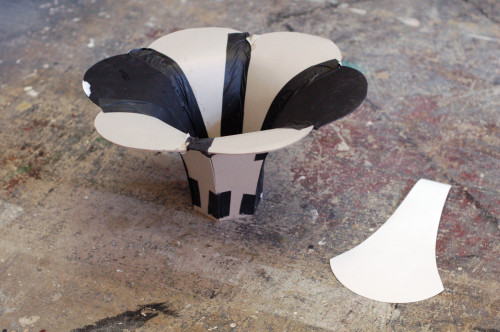
The style of gramophone horn we needed is made up of six “petal” pieces all connected together. Luckily, I found a drafting of the pattern piece needed online. I scaled it up and copied it six times onto some matboard (I used two different colors of matboard because that was all I had in the shop). I attached the bottoms of the pieces to a hexagon of plywood I had cut out.
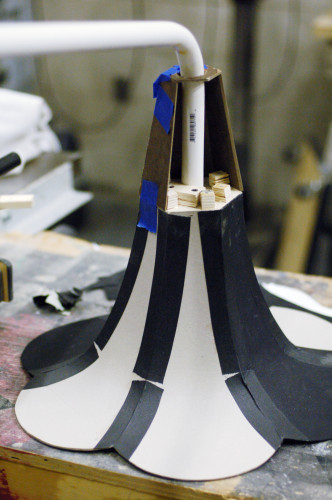
The horn was attached to a length of PVC pipe which I heated up and bent. The back of the horn needed to be longer, so I cut some trapezoids of Masonite to extend the shape back.
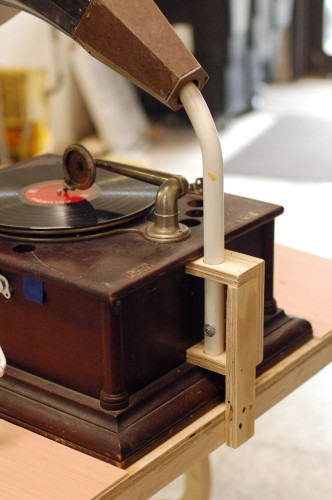
The record player itself was totally not the kind that would have a gramophone horn, so there was nowhere to attach it (a big apology to all you fans of historical accuracy). It was also a rental piece, so it could not be modified. Since the upstage side would never be seen, I attached the horn itself to the table, and built this little plywood bracket to hold the horn so it would look like it was coming out of the record player.
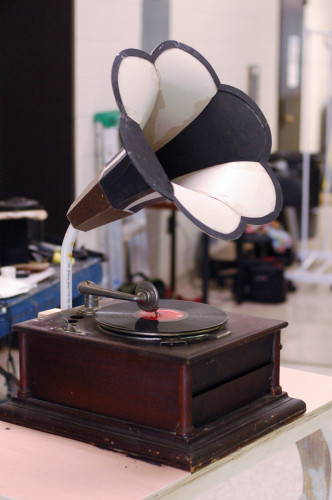
I cut out some matboard “trim” to run along the circumference of the horn to strengthen it and give it a nice clean edge. It was almost ready for paint, but the back of the horn still looked pretty bad.
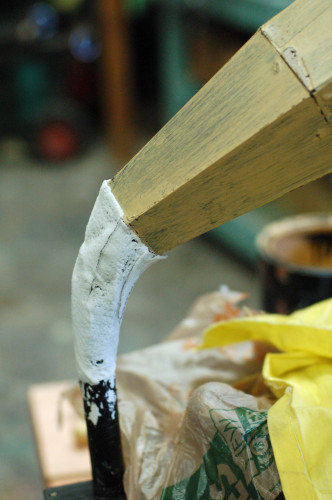
To finish off the shape, I needed a piece that could taper from the horn to the pipe, while curving around the bend in the pipe. The shape was also starting from a hexagon and ending up as a circle. Also, it was only a day or two before opening night. The quickest solution I could think of was to pattern a scrap piece of Wonderflex and wrap it on there. It needed some sanding and filling to make it smoother, but otherwise it worked like a charm.
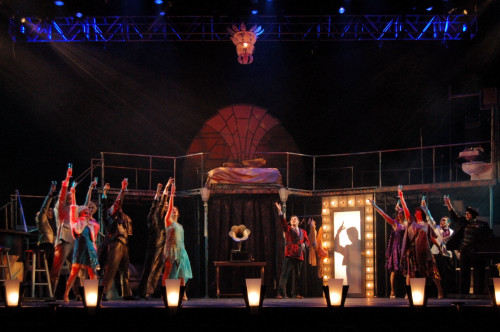
So there you have it; a down-and-dirty gramophone horn made of paper and plastic.

